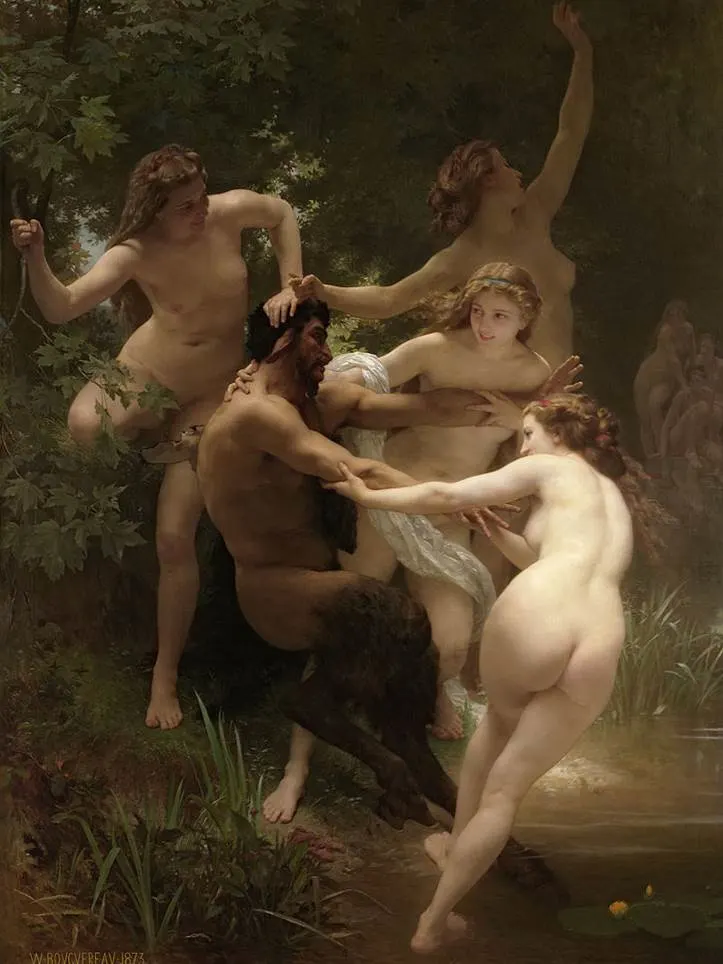The Renaissance marked a revived interest in classical antiquity all across Europe and along came the influence of mythology on art.
Ancient Greek and Roman tales that explain certain events were visualized by the greatest artists in history as they were commissioned by wealthy patrons.
Today, you can find these mythological paintings in the most popular museums in the world as they are often considered to be the highlights of the collections.
From Venus to Bacchus and from Galatea to Icarus, below you’ll find some of the most famous paintings featuring mythological figures.
1. The Birth of Venus – Sandro Botticelli
- Date created: 1484-1486
- Dimensions: 172.5 × 278.9 centimeters (67.9 × 109.6 inches)
- Location: Uffizi Gallery, Florence, Italy
The Birth of Venus isn’t merely one of the most famous Venus paintings ever completed, it’s also one of the most influential mythological paintings in history. This painting by Sandro Botticelli (1445-1510) depicts the goddess Venus shortly after she was born as a fully grown woman from the sea.
Nothing is known about the people who commissioned the painting and the content has been debated endlessly by art historians. This is usually in combination with Botticelli’s other masterpiece titled “Primavera.” It’s likely that the Italian artist was influenced by ancient painters to complete this work.
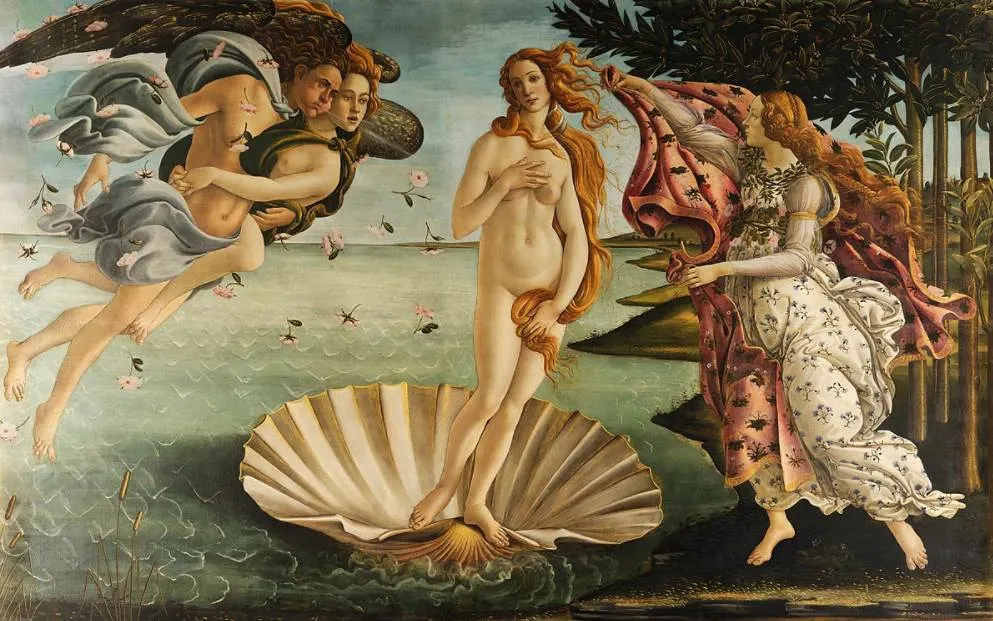
2. The Triumph of Galatea – Raphael
- Date created: 1512
- Dimensions: 295 x 224 centimeters (116.1 x 88.1 inches)
- Location: Villa Farnesina, Rome, Italy
The Triumph of Galatea is a painting by Raphael (1483-1520) that decorates the Villa Farnesina in central Rome. This mansion was constructed by a Sienese banker named Agostino Chigi, one of the richest men in Europe at the time. Raphel was already a superstar of the High Renaissance during the 1510s.
The painting depicts the beautiful Nereid Galatea from Greek Mythology who had fallen in love with a peasant boy named Acis. She was engaged to the one-eyed giant Polyphemus at the time who ended up killing Acis when he saw the couple together. Galatea is in the center of this composition and is surrounded by mythological sea creatures.

3. The Rape of Europa – Titian
- Date created: 1560-1562
- Dimensions: 178 × 205 centimeters (70 × 81 inches)
- Location: Isabella Stewart Gardner Museum, Boston, United States
The Rape of Europa is the title of a painting by Titian (1488-1576), one of the most renowned Renaissance painters of the 16th century. This particular work was one of the “Poesie” Series of Mythological paintings that Titian completed for King Philip II of Spain in the 1550s and 1560s.

The painting depicts a Phoenician princess named Europa who is being abducted by Zeus. The god of thunder disguised himself as a bull to achieve this. He takes off and brings her to the Greek island of Crete where she becomes his queen.
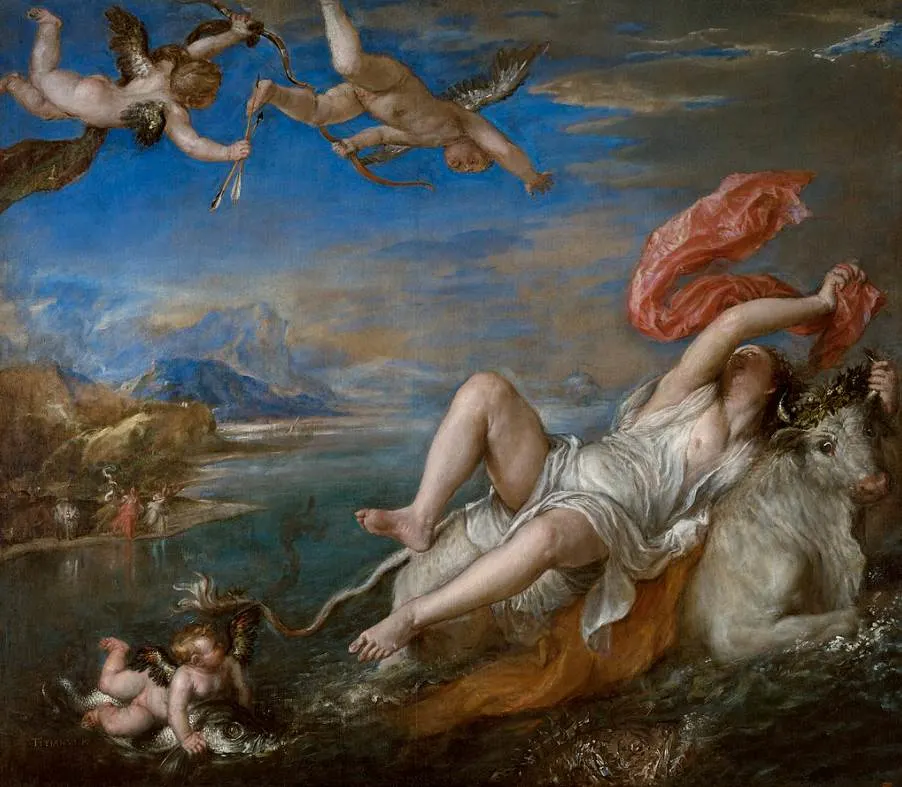
4. Landscape with the Fall of Icarus – Pieter Bruegel the Elder
- Date created: 1560
- Dimensions: 73.5 × 112 centimeters (28.9 × 44 inches)
- Location: Royal Museums of Fine Arts of Belgium, Brussels, Belgium
Landscape with the Fall of Icarus is possibly the title of a beautiful painting by Pieter Bruegel the Elder (1525-1569), one of the leading artists of the Northern Renaissance in the 16th century. Even though the composition is certainly his, it’s likely to be a very early copy of a painting by his hand that has since been lost.
The painting depicts one of the best-known stories from Greek Mythology. Icarus was a man who was able to fly using wings from his father Daedalus which were made from beeswax. He did, however, ignore his father’s warnings and flew too close to the sun. The beeswax melted and he crashed into the sea below.
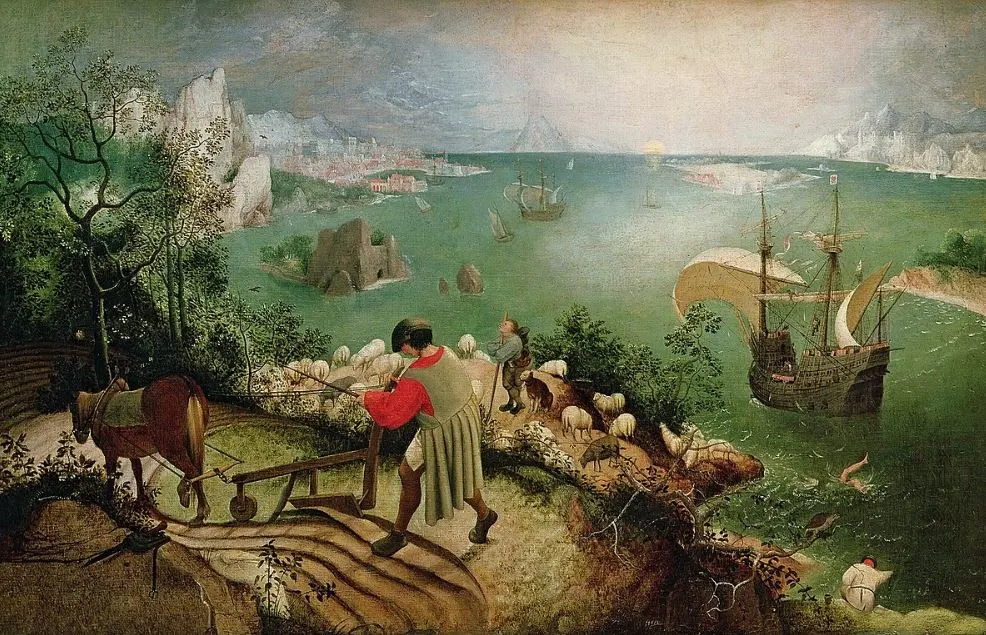
5. The Triumph of Bacchus – Diego Velázquez
- Date created: 1628-1629
- Dimensions: 165 × 225 centimeters (65 × 89 inches)
- Location: Prado Museum, Madrid, Spain
The Triumph of Bacchus is the title of a painting by Diego Velázquez (1599-1660) that is commonly referred to as “Los Borracchos” or “The Drunkards.” The Spanish artist completed the painting several years after he became the court painter of King Philip IV of Spain and shortly before he left on his first trip to Italy.
Velázquez came across the large collection of mythological paintings in the Spanish collection, including Titian’s Poesie paintings, and was definitely influenced to paint his own. This work is fascinating because it depicts Bacchus, the god of grapes and wine, surrounded by common people who indulge in a heavy drinking session.

6. Venus and Adonis – Peter Paul Rubens
- Date created: 1635-1638
- Dimensions: 197.5 x 242.9 centimeters (77 x 95 inches)
- Location: MET Museum, New York City, United States
Venus and Adonis is the title of two paintings by Peter Paul Rubens (1577-1640), one completed in 1614 and a better-known version completed in the final decade of his life. The original version is part of the collection of the Kunstpalast in Düsseldorf while the version seen below is on display at the Metropolitan Museum of Art in New York City.
The painting depicts a scene from the mythological story of Venus and Adonis mentioned in Ovid’s Metamorphoses. The painting depicts the moment before Adonis goes out to hunt, an event that will result in his demise. In this overly dramatic Baroque painting, Venus appears to warn her lover of the upcoming tragedy.

7. A Dance to the Music of Time – Nicolas Poussin
- Date created: 1634-1636
- Dimensions: 82.5 × 104 centimeters (32.5 × 41 inches)
- Location: Wallace Collection, London, United Kingdom
A Dance to the Music of Time is the title of the most ambiguous painting by Nicolas Poussin (1594-1665), a French artist who lived and worked most of his adult life in Rome, Italy. He was one of the leading classical Baroque painters of his time and inspired future generations of Neoclassical artists.
The painting was completed in the mid-1630s and commissioned by Giulio Rospigliosi (1600-1669), a man who became Pope Clement IX in 1667. Poussin’s patron allegedly detailed all elements in this work, including the chariot in the sky and the 4 dancing women. These are believed to be allegories of the 4 Seasons which are accompanied by music played by time, the old man on the right.
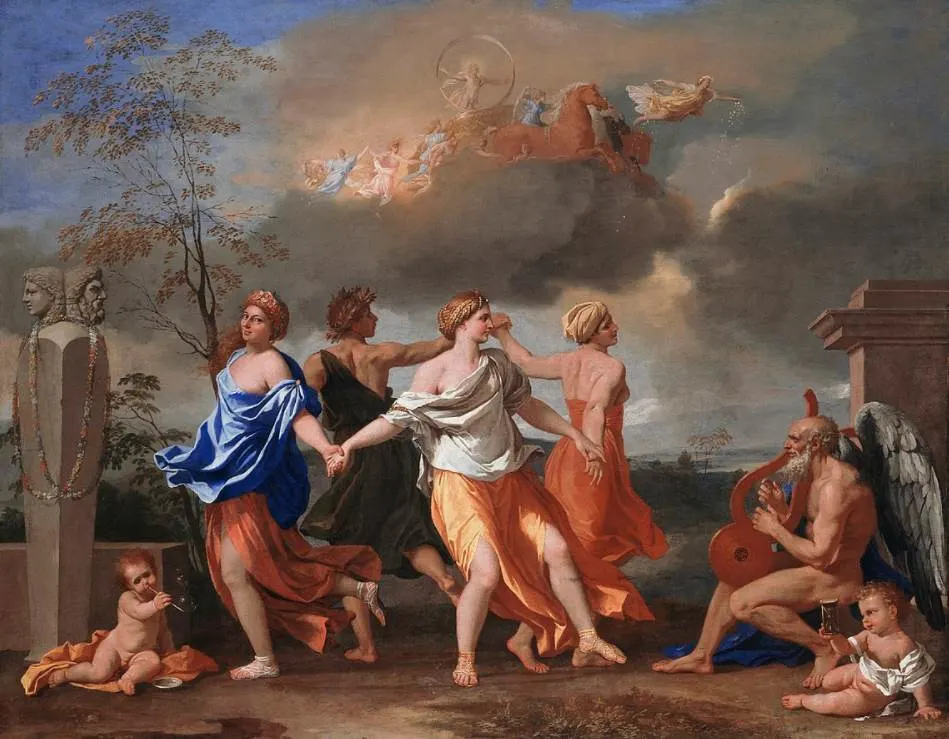
8. The Intervention of the Sabine Women – Jacques-Louis David
- Date created: 1799
- Dimensions: 385 × 522 centimeters (152 × 206 inches)
- Location: Louvre Museum, Paris, France
The Intervention of the Sabine Women is a monumental painting by Jacques-Louis David (1748-1825), a French artist who was heavily involved in politics during his career. He got the idea for this painting while he was in prison and his estranged wife visited him while incarcerated.
The painting depicts a scene from Roman mythology that presumably took place during the founding days of Rome. The Abduction of the Sabine Women by the Romans. Romulus’s wife Hersilia is the woman who wants to stop the fighting between her husband and her father Titus Tatius, the leader of the Sabines.
9. Saturn Devouring his Son – Francisco Goya
- Date created: 1819-1823
- Dimensions: 143.5 × 81.4 centimeters (56.5 × 32 inches)
- Location: Prado Museum, Madrid, Spain
Saturn Devouring his Son is a gruesome painting by Francisco Goya (1746-1828), the leading Romantic artist in Spain in the late 18th and early 19th centuries. It depicts a story from Greek Mythology in which the Titan Cronus (known as Saturn by the Romans) eats his own sons.
He was warned that one of his children would overthrow him and this was his solution to prevent this from happening. His wife Ops (Rhea) replaced one of her newborns with a stone one day and managed to save Jupiter (Zeus) by bringing him to the island of Crete. This painting was one of Goya’s Black paintings which he painted on the walls of his house on the outskirts of Madrid.

10. Nymphs and Satyr – William-Adolphe Bouguereau
- Date created: 1883
- Dimensions: 260 × 180 centimeters (100 × 71 inches)
- Location: Clark Art Institute, Williamstown, Massachusetts, United States
Nymphs and Satyr is a magnificent painting by William-Adolphe Bouguereau (1825-1905), the leading academic artist of the late 19th century in France. It depicts a group of nymphs who are pulling a satyr into the water. This mythological creature is known to be unable to swim which is why it appears to be so frightened.
The painting was displayed at the Paris Salon of 1873 and was praised heavily during this event. It was sold to an American art collector for 35,000 francs, an enormous sum at the time, and brought to the United States shortly after. Today, it’s one of the highlights of the Clark Art Institute in Williamstown, Massachusetts.
